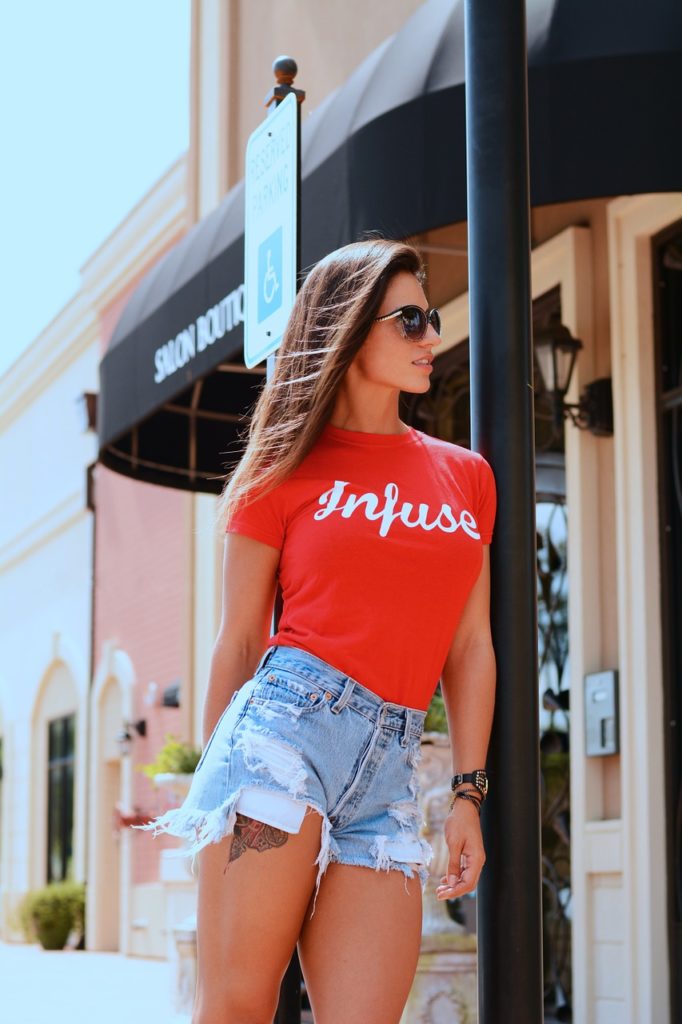Modeling is an industry that seems so warm and inviting, but the reality is somewhat in contrast to the impression it creates. The real struggle is overcoming certain norms being followed from times immemorial, like having a proper height, fair complexion, zero figure, etc. One couldn’t even think of considering modeling if he/she was less than 5’8” back in the 20th century. Now the situation is tilting, for good. Professionals are open to breaking the barriers of narrow thinking and common stereotypes. Stereotypes which serve no purpose and only hamper most of the aspiring models to refrain from this career, often to the loss of this industry only. Now with the industry witnessing this shift in traditions, it is getting severe and highly competitive. People from all sections of the society and having exceptional looks, concerning the standard norms followed earlier, are finding their stand and even carving out a niche for themselves. A short or petite model is typically shorter than 5'7'' but taller than 5'1''. So, their strength lies in their facial features and attitude. These models have left no room for excuses and excelled in their respective niches and emerged as a leader with exceptional attributes. Several petite models have overcome these age-old norms and came out shining. Let us look into what goes in to become a petite model.
Know your model type –
apart from being based on your height, body build and other physical features, things that you enjoy doing also plays an important role for identifying the role you are most comfortable in. If you like fitness, walking the runway or you experience high fashion, figuring out the desired path that you want to take will let you focus better and will allow you to hone in on the type of model that you’ll be able to be your best at. It saves you from any regrets which might follow your decision to go with a choice that was not meant for you.Research modeling agencies –
Though it is not mandatory to be signed by an agency but if you want to then do proper research before getting in or signing for an agency. You need to get an idea of how the agency works, how they have dealt with their models in the past, the way they operate, etc. You must be aware of all the steps involved in the process of getting work assigned by the agency like how and what kind of photos need to be submitted etc. Many other factors also have a part to play like the location of the agency, if you’ll be able to travel daily or not. So researching correctly is the key to be aware of your potential employers and thus offer you an added advantage.Take photos –
You must have photos to show the agency what you can do. A portfolio showing a multifaceted aspect of your personality or suitability to different scenarios is appreciated.Submit your photos to the agency –
Agencies might call for online submission, email submissions or have an open call for auditions. Whatever the case may be, be prepared to submit your good quality and the right kind of photos.Networking and gaining experience –
This is the most integral part of the modeling industry. As soon as you submit your photos, get to networking as you are going to meet new people at the agency or anywhere else. Be on the lookout for any fashion shows or competitions in your locality.Understand the needs and newest trends of the industry, work on yourself and properly utilise the time in between auditions or agency calls. Stay positive and motivated throughout this long process as the moment you get yourself noticed or you have a way of showing them that you have got what the industry needs, then there’s no one stopping you from touching the limits of success.
Now, we understand that the industry is embracing different body shapes and focusing on the positivity of the mind rather than going for the stereotypical standards. Apart from maintaining physical standards, one has to have a balance between daily activities and work schedule and be smart to attract the right kind of opportunities. Achieving a stable status in this industry is tough indeed and requires a lot of investment, emotional, physical and initially monetary also. The fashion world is a competitive and dynamic industry. It is ever evolving and to keep up with that is a necessity for aspiring models. With no shortage of models trying to kick start their career, it becomes all the more difficult to make a mark. So, to present oneself, a model needs to have an appealing portfolio which makes them stand out in a crowd. The portfolio must translate your strengths, your suitability for various jobs, i.e. your versatility. For beginners, this might burn into their pockets as it has to be taken care of by the models themselves. Charity, unpaid photoshoots and talent hunts or competitions are an excellent way to go. Traveling and commuting can be daunting as different jobs might be at various locations. After that, you have to be in constant queues and wait for the auditions. It can be unpredictable, quite exhausting and thus challenging. So, be open to every kind of situation, like you might need to pose in uncomfortable scenarios, go out of your comfort zone as per the requirement of the shoot. All of this forms a part of your travail. However, this exposure is an excellent form of socialising and is an integral part of building a good network in this industry. Even if you don’t get a steady job, networking keeps you updated. It helps you make contacts to maintain the possibility of getting assignments later on.
Patience is essential, as eventually, it will pay off once you get a good hold in the industry and start getting regular assignments or until you register your name in the list of all-time successful models.

Comments
Post a Comment